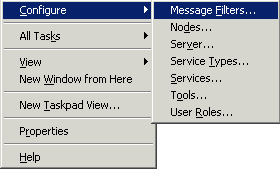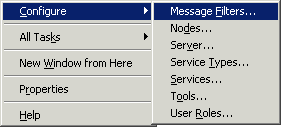
When you install HP Operations Manager for Windows, you are installing both the MMC and HPOM for Windows, which is a snap-in to the MMC. MMC is a framework that hosts snap-ins such as administrative tools used to administer networks, nodes, services, and other system components. MMC does not perform administrative functions. It hosts programs, called snap-ins, that do.
Together, the MMC and its snap-ins combine to form a console.
You can save a console by adding snap-ins to the MMC framework and
saving the configuration. Console views are saved as files with an
.msc extension. Any snap-in settings for administering
specific components or nodes can be saved as a customized
console.
All of the configuration settings for the tools and controls are
saved with the console view and restored when the customized
console file is opened. As an administrator, you can create a
console file, save it as an .msc file, then distribute
it to different computers across your environment for operators to
use in performing their tasks.
Typically, the .msc file is specific to one
management server, which is named in the .msc file. If
you distribute the .msc file to a different management
server, when you open the .msc file, it attempts to
find the server originally specified. If unable to locate that
server, the program prompts you for a new server name.
The components of an MMC console are contained in the MMC window, which has several menus and a toolbar that provide the commands to open, create, and save MMC console views. The toolbar on the MMC window is called the main toolbar.


Each console view has its own menus and toolbar, separate from those of the main MMC window, that help the user perform tasks.

If you right-click an item in the console tree without first selecting it with a left-click, a slightly different menu displays.

In the console, when you can open a new window in the following ways:
You can also request a new window from the console tree by selecting an item and then right-clicking to open the console menu. From this menu, choose the option New Window from Here.
Related Topics: